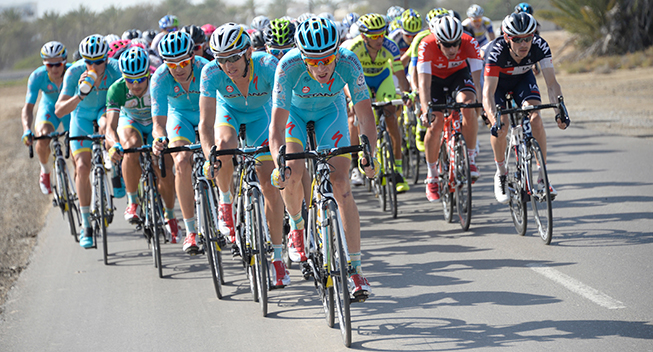Paolo Slongo started working at Astana Pro Team in 2014 where he has the dual-responsibility of Director Sportif and Head Trainer in collaboration with Maurizio Mazzoleni and two assistants to oversee 30 professional cyclists at more than 250 days of racing from February to October.
Slongo has trained athletes for more than two decades, beginning with youth clubs and eventually moving up to the Italian National Team. He rose to the Pro Tour in 2008 with Liquigas and then Cannondale.
In his own words Paolo explains Astana’s scientific approach to training and power data usage.
“The team is divided into two large groups of 15 riders each, and each of those groups are tended to by a trainer and an assistant. We use the SRM devices like a black box, and with the data it provides we can see how each athlete is riding, with heart rate, duration and power.
“Each rider has a training plan that he follows, and every four or five days he sends an email with all of his SRM data. It’s up to the coaches to download the server files and monitor the work continuously.
“Every rider is different, and we make up the training plans with respect to what they have done in the past. A training plan is also designed to follow the rider’s race schedule and the objectives the team wants to achieve.
“A trainer’s true skill is to create the best work schedule possible to achieve the goals that the athlete and the team have set.
“Once the season begins we organize training at high altitude to maintain physiological condition and take a more focused look at the workload details for competition at the big stage races.
“From February to May we take advantage of the favorable climate on the Canary Islands, while from June onwards, as in the case of the Tour de France, we go up into the Italian Alps.
“At the training camps we can pay much more careful attention to an athlete’s power, and the riders find it easier to concentrate and build an esprit de corps.
“Every 30 to 50 days we test the riders on the road to check their status and form. This gives us the possibility to set better work goals in the future, and also we can see how closely the training plans are being followed and more generally improve our fight against doping.
“If a rider has proof of an anomaly then we warn the medical staff immediately and begin to investigate the case.
“It’s important to be in constant communication with the directors and the doctors to make any corrections immediately to a training plan. But the really important work is directly with the riders. We go to the training camps and the races to see their physical condition, their mental state and also their motivation.”
| Fredy BUERGO 38 years | today |
| Laura MARTI SELLES 31 years | today |
| Carl-Frederik BÉVORT 21 years | today |
| Matthijs TIMMER 36 years | today |
| Dejan VIDAKOVIC 42 years | today |
© CyclingQuotes.com









